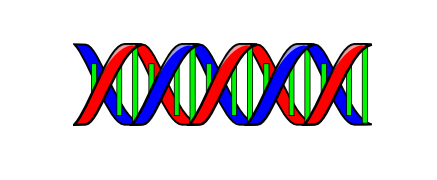Translation is the process in which RNA is used to create protein. It occurs in the cytoplasm of the cell after the mRNA leaves the nucleus (in eukaryotes).
Initiation
– The small subunit of a ribosome attaches to the 5’ end of the mRNA
– Transfer RNA for methionine then binds to the complex
– tRNA’s have an anti-codon (3 bases that match a certain codon) at one end and carry a certain amino acid at the other
– The large subunit of the ribosome attaches
Elongation
– tRNA’s, which recognize the next codon in the mRNA, binds to the A site of the ribosome
– The polypeptide chain moves from the tRNA in the adjacent P site, to the end of the tRNA in the A site
– Peptide bonds are formed between the amino acids
– The ribosome moves down the mRNA (5’-3’)
– As a result, the tRNA that was in the P site is moved to the E site, and the tRNA that was in the A site is moved to the P site, leaving the A site empty for another tRNA to attach
– The tRNA in the E site then leaves the ribosome
– Thus, the polypeptide chain grows longer as elongation continues
Termination
– When the A site reaches a stop codon, a release factor binds
– Polypeptide chain is cleaved from the tRNA and released, along with the tRNA
– The ribosome and mRNA dissociates from each other
After translation, several modifications occur to the polypeptide chain before it becomes a functioning protein.
Looking to get ready for the ACT? We can help with ACT Prep
This article was written for you by Samantha, one of the tutors with SchoolTutoring Academy.


